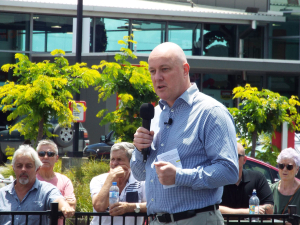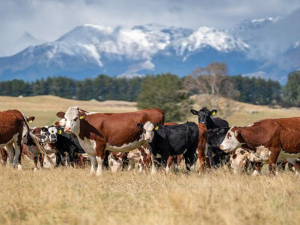DairyNZ says there has been significant progress made in driving down the numbers of farms affected by Mycoplasma bovis.
However, it is reminding farmers to remain vigilant. It says not easing off is critical if we are to track down and eradicate this disease.
“Although we are on track to achieve eradication, there is still a lot of hard work ahead of us and we do expect to find more infected herds as the programme continues,” DairyNZ says.
The industry-good organisation continues to be actively involved in the M. bovis Programme, at both the governance level and on the ground supporting farmers.
As at 23 September 2020:
There have been 252 confirmed properties to date with just three Active Confirmed Properties and the remaining cleared.
Of these, 135 confirmed properties have been beef, 62 dairy and 55 classified as others, such as calf rearer, grazing and lifestyle.
There are currently 36 farms under notices of direction (movement controls when there’s a high risk that cattle on the farm may be infected).
There are currently 170 active surveillance properties (farms with a low risk of having been exposed to M. bovis are required to undergo testing to ensure that there is no infection in their cattle).
$175.9 million has been paid out in compensation.
Bulk Tank Milk screening
The August Bulk Tank Milk screening (BTM) has been completed and, as anticipated for this time of year, it has returned a number of ‘detect’ results.
There has been a rise in reported movement restrictions (NODs) as on-farm investigation is carried out to determine the infection status for these farms progresses.
DairyNZ says farms with detect results are contacted by programme staff to work through next steps.
“Currently we have two new confirmed properties and one that is still under investigation, which may be confirmed once final test results come back. These newly identified properties show our national surveillance programme working as it should – by detecting possible cases and showing us where we need to look to eliminate the infection.
“It’s difficult to say how many new infected dairy farms will be identified throughout the spring 2020 bulk tank milk screening. We have always said we would see more infected properties over spring.
“This is when we do more tests, so it makes sense that we also report more detects during this time. It’s when the animals are under stress from calving and milking. We also have 2018-born animals on the milking platform for the first time.”
DairyNZ says investigations are continuing into five dairy farms which returned September BTM ‘detect’ results, a much smaller number than in August.
Bulk tank milk screening plays an important role in looking for infection outside the tracing network. It will also play an important long-term role in gathering the evidence we need to declare freedom from M. bovis in New Zealand.
Beef surveillance
The National Beef Cattle Surveillance programme covers screening of beef cattle not connected to the known network of infected properties, sampled at meat processing or alongside TB testing.
As of 16 September 2020, some 58,000 animals, from over 2400 farms have had samples collected for testing and only six farms have required further on-farm investigation.
Results from the beef surveillance programme provide an important indication that the disease is not widespread in New Zealand’s beef cattle population.
DairyNZ says as we continue to find fewer and fewer cases, the programme’s efforts will be focused on national surveillance to provide confidence that the disease is absent. An independent Technical Advisory Group will be convened to review plans for this ‘evidence of absence phase’.


















